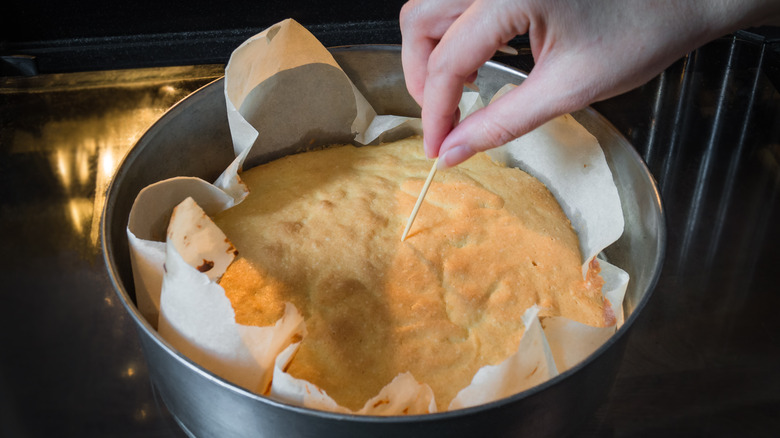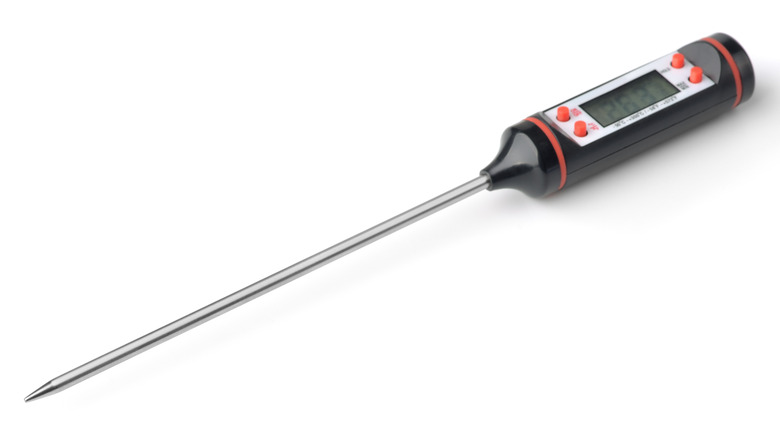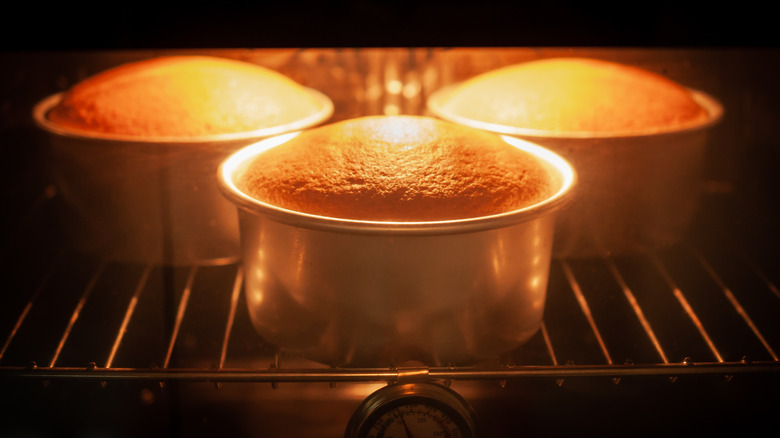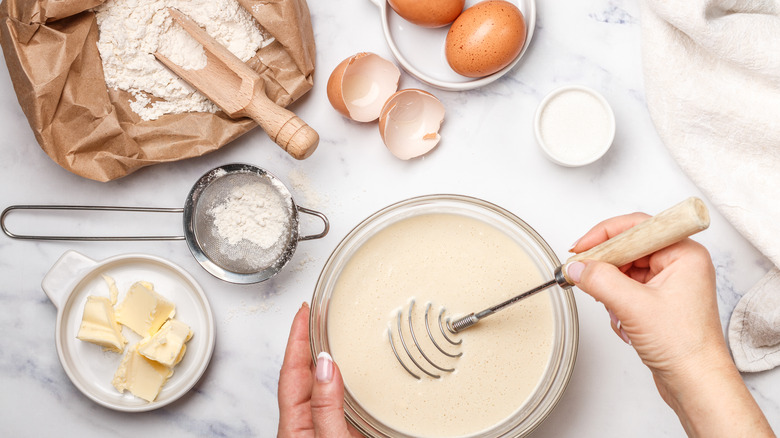Why You Shouldn't Use A Toothpick To Check A Cake's Doneness
Sticking in a toothpick is one of the most time-honored dessert and baking hacks for those looking to figure out whether cakes and other items are ready to come out of the oven. But as simple as the technique is, it's unfortunately not a very good one for those looking for the best quality.
For those unfamiliar, it simply involves inserting a toothpick or other small, slim item into the cake. According to generations of folk wisdom, the cake is done if the toothpick comes out clean. In reality, by the time a toothpick is cleanly removed from a cake or other baked good, it's already too dry and overdone. Toothpicks typically come out crumb-free at around 212 degrees Fahrenheit — not coincidentally, the temperature that water boils. The boiling-off of that water in the batter means the final product will be drier than it should be.
An additional issue with the toothpick method is that it requires opening the oven repeatedly. Even if it's just for a moment, as you remove or replace the baked goods, the temperature will drop, creating more inconsistent results.
Better baking alternatives
So what should you do instead? The answer can be as simple as using an instant-read food thermometer. Aim for an internal temperature of 205 degrees (depending on the cake), which, after cooling outside the oven, will produce a perfectly tender and moist cake.
There are several critical factors and features you'll want to consider when selecting the right kitchen thermometer. Naturally, accuracy is the most essential quality. High-end models may offer the ability to calibrate them for especially sensitive tasks. It's also critical that thermometers be instant-read models or produce a temperature reading within a few seconds at most, limiting the time the baked goods will be out of the oven if they're not finished.
Thermometer probes should be durable, simple to extend or retract if the design allows, and easy to clean. Make sure to consider any other additional features that matter to you, like the type of display and whether temperatures include decimal points. This also includes price, which can vary significantly between budget-focused and high-end models. Still, keep in mind that, when properly cared for, a quality baking and kitchen thermometer can provide years of use for even the busiest chefs.
Using your eyes and nose
However, you should still seek to check the temperature as few times as possible to avoid the issues related to opening the oven. Luckily, there are also other reliable ways for bakers to tell when their cakes and other creations are ready without either of these methods. Flour company King Arthur recommends checking out the edges of the pan. If the cake has pulled away, it's likely done. The shrinkage is a sign that the water in the batter has mostly evaporated, pulling the other ingredients more tightly together to form the cake itself.
@noflakeysalt This is why you should never use a toothpick to check if your cake is done. That method works but it’ll always result in an overcooked cake that is dry and crumbly rather than moist and tender. #cakehack #bakinghacks #baking #bakingtiktok #foodie #learnontiktok
When done, lighter-colored cakes should also turn golden brown on top. This color change occurs due to two key processes, both of which are desirable for your final product. These are caramelization, where sugars in exterior portions of the batter break down and change in flavor and appearance, and the Maillard reaction, a more complex process involving proteins, sugars, and other substances chemically changing in flavor and appearance in the presence of heat. The latter is the same process that browns the surface of a cooking steak or roasting potato. More experienced bakers can tell if a cake is done by smelling for just the right fragrance of a finished product or touching it to see whether it leaves indentations (a sign the cake needs more time).
The critical reasons to get it right
For some, it can be tempting to wing it when figuring out whether a cake is done. But baking is a science as well as an art, and both overbaking and underbaking a cake can have downsides beyond just less-than-ideal flavor or texture. Overbaked foods can become tougher and more difficult to digest, putting extra stress on the body. In extreme cases, burnt or charred foods can contain substances linked to various forms of cancer. The consequences of underbaking can also be serious, with undercooked dough or batter (and ingredients like raw eggs) serving as a perfect incubation spot for harmful bacteria that can cause food poisoning.
Finding alternatives to the toothpick check is a critical step toward producing better-baked goods. But there are still many other common mistakes everyone makes when baking a cake that you can likely eliminate from your cooking habits.



